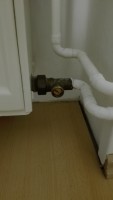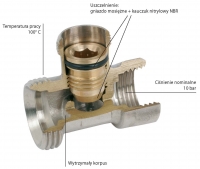Hello.
First of all, I apologize for what may be a stupid question, but I`m new to this topic.
I live abroad and I have a problem in my rented apartment. One of the radiators does not heat at all. I checked and there is no air. The water supply pipe is warm to the place shown in the photo of the valve (the closer to the valve, the colder the pipe is). All other radiators are working. Should I unscrew it? I am afraid of problems that cost money abroad and not at home. Yesterday I loosened it slightly and a few drops of water came out. Thank you all very much for any answers.
First of all, I apologize for what may be a stupid question, but I`m new to this topic.
I live abroad and I have a problem in my rented apartment. One of the radiators does not heat at all. I checked and there is no air. The water supply pipe is warm to the place shown in the photo of the valve (the closer to the valve, the colder the pipe is). All other radiators are working. Should I unscrew it? I am afraid of problems that cost money abroad and not at home. Yesterday I loosened it slightly and a few drops of water came out. Thank you all very much for any answers.




